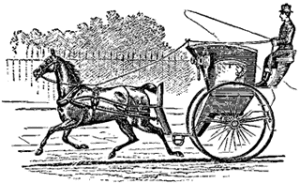 Leaders are often responsible for seeing that those who they lead deliver results, and it’s no different in Scouting.
Leaders are often responsible for seeing that those who they lead deliver results, and it’s no different in Scouting.
Our youth leaders must work together to achieve common goals. The leaders that the Scouts elect are directly responsible for not only the welfare of those who elected them, but for seeing that everyone does what’s expected of him.
On the committee, we also have expectations. While the committee doesn’t elect the chairman, he or she should feel a sense of responsibility toward committee members just as if there had been an election. The committee chair’s job is to make sure all the other jobs are fulfilled by good and capable people, and that results happen from their actions.
In both of these scenarios, what has to happen in order for results to take place? What’s the one biggest thing that we as leaders need to do to help those we lead are successful?
If anyone is expected to produce results – either as a member of a patrol or holding a job on the committee – they need to know what results they’re expected to produce. It’s as simple – and complicated – as that.
Without a clear definition of the expected outcome, how will either of us know when results are taking place?
With the committee, it can be procedural but very succinct, in the form of a job or position description. However, most jobs have a lot of “wiggle room” where duties can overlap between individuals. It pays dividends in the long run to have clearly-stated expectations in order to pave a path to success for the individual.
For our youth leaders, defining results and success can be much more nebulous. This is where the Scoutmaster needs to be not only clear with expectations but also flexible in dealing with the leadership development level of individual Scouts. Through regular conferences and check-ins with the youth leadership, the Scoutmaster can get an idea of how the youth leader is doing and what obstacles he’s running into.
In either case, it’s important to do the right stuff on the front end – or stated another way, to put the horse before the cart. Leadership coach Kevin Eikenberry talks about this in a short discussion on coaching and reprimanding. It’s worth a look to see what he says about the subject in the corporate world. In Scouting, though, we need to be mindful that we don’t get to the reprimanding stage – in short, we don’t reprimand; we only coach, and change our coaching methods to find one that works best with each person.
On the committee we’re expecting positive results, of course, and a reprimand isn’t called for, but rather we extend the helping hand to find ways for our volunteers to succeed. With the youth leaders, we need to remember that what’s important is the process by which our Scouts learn to lead – not the quality of the final result. We’re in a safe harbor where Scouts are free to make mistakes and learn from them, and it’s our job to help them discover for themselves how to be better leaders.
Eikenberry also points out that when results don’t take place, we need to be clear about the fact and be ready with corrective action. In our case, we can gently nudge back in the right direction by providing help to our committee members. In the case of youth leadership, follow-up and reflection can help a Scout discover how to use his skills and talents in different ways – or to acquire new skills.
Doing the right stuff at the outset – clearly defining objectives and helping find a path to those goals – is the way to get someone started on a positive leadership experience.
Image: Wikimedia Commons
This post first appeared on Bobwhite Blather.



